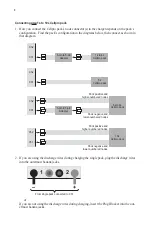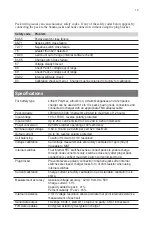
17
Estimating performance factors
If you don’t have a way to directly measure your propulsion system’s electrical parameters, the
Cellpro 10s Charger enables you to estimate them using before- and after-flight measurements.
Collect data
Charge pack.
When charging is finished, record
Fuel %
and
total pack voltage
(i.e. sum of cell voltages).
Fly plane (or test on the ground). Record
flight time in minutes
.
Connect pack to charger. Record
Fuel %
and
total pack voltage
.
Calculate performance factors
(Fuel % before flight) – (Fuel % after flight)
100
x (Pack capacity, Ah) =
Capacity consumed during flight, Ah
(Capacity consumed during flight, Ah) x 60
(Flight time, minutes)
=
Average current during flight, A
(Pack voltage before flight, V) + (Pack voltage after flight, V)
2
=
Average voltage during flight, V
(Average voltage during flight, A) x (Average current during flight, V) =
Average power during flight, Watts
Evaluate results
Average current during flight
gives you a rough idea whether system components—ESC,
motor, connectors and wiring—are operating within their current ratings. Keep in mind that
peak current during flight may greatly exceed the average current you calculated.
Watts per pound
is an approximate indicator of aircraft performance (other factors influenc
-
ing performance include lift, drag and motor type). Here are some guidelines:
25 to 30 watts per pound: level flight.
40 to 50 watts per pound: take off from smooth surface, climb.
50 to 75 watts per pound: take off from grass, sport aerobatics.
75 to 125 watts per pound: pattern aerobatics.
Over 125 watts per pound: 3D.
Tip:
For more direct electrical measurements, consider these FMA products:
60A Current Shunt (Model DVM-SHUNT-60)
Digital Multimeter (Model DVM-VC890D)
(Average power during flight, Watts)
(Model weight, pounds)
=
Watts per pound




































